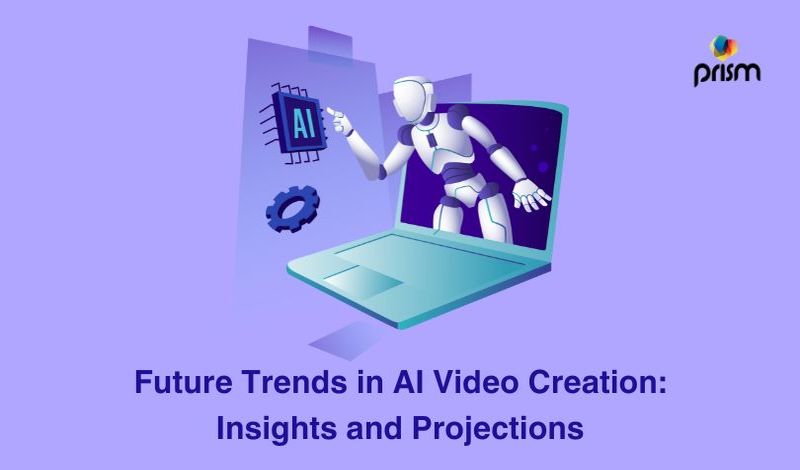

Future Trends in AI Video Creation: Insights and Projections

Table Of Contents
1. The Current State of AI Video Creation
AI-powered video creation tools have already made a significant impact across various industries. From marketing and advertising to entertainment and education, businesses and individuals are leveraging these tools to streamline their video production processes and enhance their content creation capabilities.
One of the key features of AI video creator is their ability to automate the video production process. These tools utilize advanced algorithms and machine learning techniques to analyze raw footage, identify key elements, and generate polished videos in a fraction of the time it would take a human editor. This not only reduces production costs but also allows creators to focus their time and energy on more creative aspects of their projects.
Furthermore, AI video creators are equipped with a range of customizable templates and effects, allowing users to easily create professional-looking videos without any prior editing experience. Whether it's adding text overlays, transitions, or visual effects, these tools empower users to elevate their content and engage their audience more effectively.
However, the current state of AI video creation is not without its limitations. While these tools excel at certain tasks such as basic editing and template-based video production, they still struggle with more complex tasks that require nuanced understanding and creative decision-making.
Additionally, the quality of the output generated by AI video creators can vary depending on factors such as the quality of the input footage and the sophistication of the algorithms being used.
2. Emerging Trends in AI Video Creation
Despite these limitations, the future of AI video creation looks promising, with several emerging trends poised to reshape the landscape:
- Advanced Machine Learning Algorithms: As machine learning techniques continue to evolve, we can expect AI video creators to become more adept at understanding and interpreting visual content. This will enable them to generate more sophisticated and personalized video experiences tailored to the specific needs and preferences of individual users.
- Generative Adversarial Networks (GANs): GANs, a class of AI algorithms that are capable of generating realistic images and videos, hold great potential for the future of video creation. By leveraging GANs, AI video creators can generate highly realistic and immersive visual content that blurs the line between reality and fiction.
- Natural Language Processing (NLP) Integration: Integrating NLP capabilities into AI video creators will enable users to interact with the software using natural language commands. This will streamline the video production process and make it more intuitive and accessible to users who may not have expertise in traditional editing tools.
- Real-time Collaboration Tools: With the rise of remote work and distributed teams, there is a growing demand for real-time collaboration tools that enable multiple users to collaborate on video projects simultaneously. AI-powered video creation platforms are beginning to incorporate features that facilitate real-time collaboration, allowing users to work together seamlessly regardless of their location.
- Personalized Content Creation: As AI algorithms become more sophisticated, we can expect AI video creators to offer more personalized content creation experiences. By analyzing user data and preferences, these tools will be able to generate video content that is tailored to the individual interests and tastes of each viewer, leading to higher levels of engagement and satisfaction.
3. Projections for the Future
Looking ahead, the future of AI video creation is filled with exciting possibilities. Here are some projections for how the technology may evolve in the coming years:
- Hyper-realistic Virtual Environments: AI-powered video creators will enable users to generate hyper-realistic virtual environments that rival the quality of traditional film and television production. These environments will be fully customizable and dynamically generated based on user input, allowing for unprecedented levels of creative freedom.
- AI-generated Actors and Characters: In addition to virtual environments, AI video creators will be capable of generating lifelike digital actors and characters that can be seamlessly integrated into video content. These AI-generated characters will be able to emote, interact, and respond to user input in real-time, opening up new possibilities for interactive storytelling and immersive experiences.
- Automated Storyboarding and Scriptwriting: AI algorithms will assist creators in the early stages of video production by automatically generating storyboards and script outlines based on input parameters such as genre, tone, and target audience. This will streamline the pre-production process and enable creators to iterate on their ideas more quickly and efficiently.
- Cross-platform Integration: AI video creation tools will become increasingly integrated with other platforms and technologies, allowing for seamless cross-platform content creation and distribution. Whether it's generating videos for social media marketing, virtual reality, or augmented reality, AI video creators will adapt to the unique requirements of each platform and deliver optimized content experiences.
- Ethical and Regulatory Considerations: As AI video creation technology becomes more advanced, there will be an increasing need for ethical guidelines and regulatory frameworks to ensure responsible use and mitigate potential risks such as misinformation, manipulation, and privacy violations. Stakeholders from across industries will need to collaborate to develop and enforce standards that protect both creators and consumers.
In conclusion, AI video creation is poised to revolutionize the way we produce, consume, and interact with video content in the years to come. With advancements in machine learning, natural language processing, and virtual environments, we can expect AI video creators to become increasingly sophisticated and versatile, empowering creators to push the boundaries of creativity and storytelling like never before.
However, as with any transformative technology, it's essential to approach AI video creation with a thoughtful and responsible mindset, ensuring that its potential benefits are maximized while its potential risks are mitigated.

About The Author: Lovetto Nazareth
Lovetto Nazareth is a digital marketing consultant and agency owner of Prism Digital. He has been in the advertising and digital marketing business for the last 2 decades and has managed thousands of campaigns and generated millions of dollars of new leads. He is an avid adventure sports enthusiast and a singer-songwriter. Follow him on social media on @Lovetto Nazareth
Post Your Comment!
Recent Blogs
Digital Dominance: Why do you need a Top Web Development Agency in Dubai?
Dominate Search Engines with Top-Tier PPC Management Dubai in 2025
Top Video Production Companies in Dubai – 2025
Mobile-First Indexing: How To Optimize Your Website For The Future

Support
Phone: +971 55 850 0095
Email: sales@prism-me.com
Location: Prism Digital Marketing Management LLC Latifa Tower, Office No. 604 - West Wing World Trade Center 1, Sheikh Zayed Road Dubai, UAE
Subscribe
Join our newsletter to stay up to date on features and releases.
By subscribing you agree to our Privacy Policy and provide consent to receive updates from our company.
